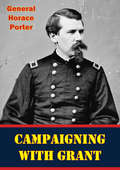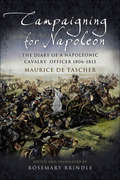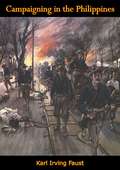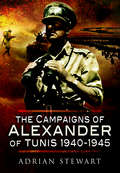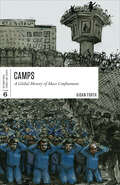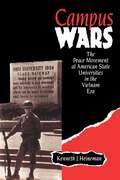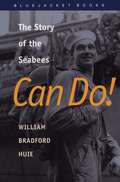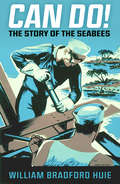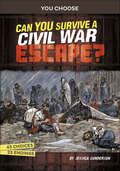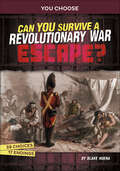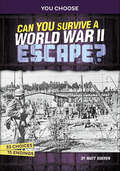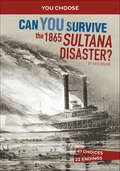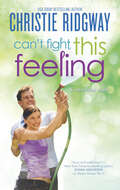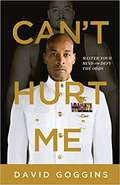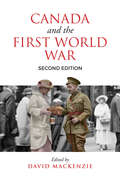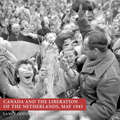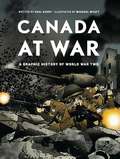- Table View
- List View
Campaigning With Grant [Illustrated Edition]
by General Horace PorterIncludes Civil War Map and Illustrations Pack - 224 battle plans, campaign maps and detailed analyses of actions spanning the entire period of hostilities.In 1863 Horace Porter, then a captain, met Ulysses S. Grant as Grant commenced the campaign that would break the Confederate siege at Chattanooga. After a brief stint in Washington, Porter rejoined Grant, who was now in command of all Union forces, and served with him as a staff aide from April 1864 until the end of the war. He accompanied Grant into battle in the Wilderness, Cold Harbor, and Petersburg campaigns and was present at Lee's surrender at McLean's house. Throughout the war he kept extensive notes that capture Grant's conversations as well as his own observations of military life.Porter was at Appomattox as a brevet brigadier general, and this work, written from notes taken in the field, is his eyewitness account of the great struggle between Lee and Grant that led to the defeat of the Confederacy.As a close-up observer of Grant in the field, Porter was also able to draw a finely detailed, fully realized portrait of this American military hero--his daily acts, his personal traits and habits, and the motives that inspired him in important crises rendered in the language that Grant used at the time.Porter intended to bring readers into such intimate contact with the Union commander that they could know him as well as those who served by his side. He acquits himself admirably in this undertaking, giving us a moving human document and a remarkable perspective on a crucial chapter of American history.We also hear of Grant's dealings with Lincoln, of the close relationship between Sherman and Grant, and of Lee's noble bearing at his surrender. This is a stirring account that brings to life our country's most memorable conflict.
Campaigning for Napoleon: The Diary of a Napoleonic Cavalry Officer 1806–1813
by Maurice de Tascher Rosemary BrindleIn 1806 an enthusiastic young Frenchman Maurice de Tascher embarked on a career as a soldier in Napoleon's Grand Arme. He was inspired by the emperor's triumphs and determined to win glory and serve his country. In 1813, disillusioned by war and doubtful about the honor of the French cause, de Tascher died in Berlin, a victim of Napoleon's disastrous war against Russia. This is his story.
Campaigning in the Philippines: Illustrated
by Karl Irving Faust“WHEN the idea of compiling an historical account of the operations of the American forces in the Philippine Islands was conceived, the war clouds had nearly all disappeared from the horizon, and all that remained were those caused by the prospect of trouble with the insurgents, which, however, were not supposed to be serious. It was expected that the volunteer regiments would be speedily replaced by regulars, who would only be needed for policing the islands.“It was intended, therefore, to give in this book an accurate description of the campaign, from Dewey’s great victory to the return of the volunteers, and, in addition, a brief description of the islands. It was also proposed to publish special editions of the book for each of the volunteer regiments, which would contain, in addition to the foregoing, a detailed account of the experience of the regiments from date of mustering into service as volunteers to their return to the United States. In order to obtain this information, it was found necessary to go to Manila, and consequently on December 24, 1898, MR. KARL IRVING-FAUST, to whom is due the credit of having conceived and carried into execution this work, sailed from San Francisco on the steamer Gaelic, bound for Manila via Hong Kong, with plans and prospectus for compiling such a book.“Arriving at Manila on February 2, 1899, it soon became apparent that the plans must be changed. Dark foreboding clouds were hanging over the city, and for more than a month there had been ominous rumors of an outbreak of hostilities Two days later the expected happened, and the real campaign of the Eighth Army Corps commenced in dead earnest.[…]”Richly illustrated throughout.
Campaigns of Alexander of Tunis, 1940–1945
by Adrian StewartAlex, as he was known whether by Prime Ministers or the rank-and-file, was a legendary figure. A hero from the Great War he saw active service in Russia in 1919 20 and against the Pathans on the North West Frontier in 1935. By 1940 he was a divisional commander with the B.E.F. in France. His conduct during the withdrawal through Dunkirk where he took over the British 1st Corps in the crisis confirmed his outstanding ability.In the dark days of 1942 by now a full general he was sent to Burma with orders to hold the Japs at Rangoon. Just in time he realizes it was impossible and his decision to withdraw prevented a total disaster.Despite this defeat he retained Churchills confidence and he was appointed C in C Middle East. While eclipsed in PR terms by his subordinate Montgomery many felt that Monty owed his success to Alex by protecting him from an increasingly impatient Churchill. Alexander went onto commanded the invasion of Sicily and as Army Group Commander masterminded the long slog up through Italy. His charm and easy nature were his greatest strengths as others worked enthusiastically with him, but critics have sought to prove that he lacked true ability and steel.
Campesinado y nación: Las guerrillas indígenas en la guerra con Chile
by Nelson ManriqueA cuarenta de su primera publicación, Campesinado y nación. Las guerrillas indígenas en la Guerra con Chile es el libro fundamental de Nelson Manrique que nos permite reflexionar sobre las complicadas relaciones sociales en el Perú. Concebido no solo como un libro de historia, sino de formación de conciencia ciudadana, Campesinado y nación propone un novedoso enfoque de un capítulo controversial del siglo XIX en el Perú. Teniendo como marco histórico la guerra del Pacífico, este pormenorizado estudio aborda el papel que cumplió el campesinado peruano en la sierra central durante el período comprendido entre 1881 y 1884. Mediante una detallada investigación y una prosa de aliento narrativo, Nelson Manrique profundiza en el rol de la resistencia peruana contra Chile, y revisa las imágenes convencionales de las masas campesinas indígenas en un conflicto que dividió y enfrentó a los propios peruanos. Campesinado y nación nos permite reflexionar sobre las complicadas relaciones sociales en el país, durante una época de luchas, tanto externas como internas, y cuyas tensas contradicciones se mantienen hasta el día de hoy en el entramado nacional. «El examen de los aspectos sociales de la resistencia en la sierra entre 1881 y 1883 […] ahora ha tomado gran impulso con los trabajos de Nelson Manrique». Jorge Basadre «Es realmente un gran libro. Un gran libro de historia, por todo lo que tiene de verdaderamente nuevo». Ruggiero Romano «No es un trabajo que se lea y se olvide. Todo lo contrario: es un texto destinado a durar». Alberto Flores Galindo
Camps: A Global History of Mass Confinement (International Themes and Issues #6)
by Aidan ForthThe concentration of terrorists, political suspects, ethnic minorities, prisoners of war, enemy aliens, and other potentially “dangerous” populations spans the modern era. From Konzentrationslager in colonial Africa to strategic villages in Southeast Asia, from slave plantations in America to Uyghur sweatshops in Xinjiang, and from civilian internment in World War II to extraordinary rendition at Guantanamo Bay, mass detention is as diverse as it is ubiquitous. Camps offers a short but compelling guide to the varied manifestations of concentration camps in the last two centuries, while tracing provocative transnational connections with related institutions such as workhouses, migrant detention centers, and residential schools.
Campus Wars: The Peace Movement At American State Universities in the Vietnam Era
by Kenneth J. Heineman"At the same time that the dangerous war was being fought in the jungles of Vietnam, Campus Wars were being fought in the United States by antiwar protesters. Kenneth J. Heineman found that the campus peace campaign was first spurred at state universities rather than at the big-name colleges. His useful book examines the outside forces, like military contracts and local communities, that led to antiwar protests on campus."-Herbert Mitgang, The New York Times"Shedding light on the drastic change in the social and cultural roles of campus life, Campus Wars looks at the way in which the campus peace campaign took hold and became a national movement."-History Today "Heineman's prodigious research in a variety of sources allows him to deal with matters of class, gender, and religion, as well as ideology. He convincingly demonstrates that, just as state universities represented the heartland of America, so their student protest movements illustrated the real depth of the anguish over US involvement in Vietnam. Highly recommended."-Choice "Represents an enormous amount of labor and fills many gaps in our knowledge of the anti-war movement and the student left."-Irwin Unger, author of These United States The 1960s left us with some striking images of American universities: Berkeley activists orating about free speech atop a surrounded police car; Harvard SDSers waylaying then-Secretary of Defense Robert McNamara; Columbia student radicals occupying campus buildings; and black militant Cornell students brandishing rifles, to name just a few. Tellingly, the most powerful and notorious image of campus protest is that of a teenage runaway, arms outstretched in anguish, kneeling beside the bloodied corpse of Jeff Miller at Kent State University. While much attention has been paid to the role of elite schools in fomenting student radicalism, it was actually at state institutions, such as Kent State, Michigan State, SUNY, and Penn State, where anti-Vietnam war protest blossomed. Kenneth Heineman has pored over dozens of student newspapers, government documents, and personal archives, interviewed scores of activists, and attended activist reunions in an effort to recreate the origins of this historic movement. In Campus Wars, he presents his findings, examining the involvement of state universities in military research - and the attitudes of students, faculty, clergy, and administrators thereto - and the manner in which the campus peace campaign took hold and spread to become a national movement. Recreating watershed moments in dramatic narrative fashion, this engaging book is both a revisionist history and an important addition to the chronicle of the Vietnam War era.
Can America Remain Committed?: U.s. Security Horizons In The 1990s
by David G. HaglundThe twelve months that spanned the period between the early springtimes of 1991 and 1992 may well turn out to constitute the most important year for American foreign and security policy in half a century. Encasing the dawning of a new and different security era, like macabre parentheses, were two columns of black smoke-that of 1991 over the newly liberated Kuwait, and that of 1992 over the embattled district of South-Central Los Angeles. Within these acrid temporal brackets unfolded a set of developments of utmost significance for American foreign and security policy and for the very meaning of the country's external commitments.
Can Do!
by William Bradford HuieWhen William Bradford Huie, a reporter for H. L. Mencken's American Mercury, joined the U.S. Navy in 1943, he received a commission as a public relations officer in the little-known Civil Engineer's Corps Construction Battalions--the Seabees. With the publication of Can Do! the following year, Americans soon came to appreciate the significance of the corps's work and the danger of their wartime activities. As readable and entertaining today as it was some fifty years ago, this account tells the story of the Seabees who landed with the Marines at Guadalcanal and Wake Island, Sicily and Salerno. Experienced civilian engineers, carpenters, steam-shovel operators, plumbers, truck drivers, surveyors, and the like, they landed with the first waves of American assault troops, bringing heavy equipment ashore to build roads, bridges, and airfields and repair whatever they could. Often working under enemy fire, they incurred many casualties and won the deep respect of everyone who came into contact with them.Huie's book is filled with spirited accounts of the Seabees's achievements in the Aleutians, the South Sea islands, Europe, and Africa. A passionate and convincing advocate, Huie wrote the book not only to call attention to their accomplishments but to serve as an inspiration to others, and he often has the Seabees tell their stories in their own words. Appendixes offer valuable details, including lists of casualties, award recipients, and Seabees' poems. An introduction by Donald R. Noble is included in this new paperback edition.
Can Do!: The Story of the Seebees (Bluejacket Bks.)
by William Bradford HuieCan Do!, first published in 1944, is a fascinating account of the formation and Second World War activities of the U.S. Navy 'Seabees' (from 'C.B.' - construction battalion). The book covers projects of the Seabees throughout the South Pacific, the Aleutian Islands, and in Italy, as well as numerous personal stories of the men as they faced enemy attacks, for example, while attempting to construct vital island runways. Their skill and competence in critical trades such as construction, engineering, pipe-laying, electricity, and plumbing, and their positive 'Can Do!' attitude in the face of danger and difficult conditions were critical in the Allied effort to win the war and remain an inspiration to younger generations. This new edition includes 70 pages of photographs of Seabee activities throughout the world.
Can You Beat Churchill?: Teaching History through Simulations
by Michael A. BarnhartHow do you get students to engage in a historical episode or era? How do you bring the immediacy and contingency of history to life? Michael A. Barnhart shares the secret to his award-winning success in the classroom with Can You Beat Churchill?, which encourages role-playing for immersive teaching and learning. Combating the declining enrollment in humanities classes, this innovative approach reminds us how critical learning skills are transmitted to students: by reactivating their curiosity and problem-solving abilities.Barnhart provides advice and procedures, both for the use of off-the-shelf commercial simulations and for the instructor who wishes to custom design a simulation from scratch. These reenactments allow students to step into the past, requiring them to think and act in ways historical figures might have. Students must make crucial or dramatic decisions, though these decisions need not align with the historical record. In doing so, they learn, through action and strategic consideration, the impact of real individuals and groups of people on the course of history. There is a quiet revolution underway in how history is taught to undergraduates. Can You Beat Churchill? hopes to make it a noisy one.
Can You Escape a Haunted Battlefield? (You Choose)
by Megan Cooley PetersonThe sun is setting on a historical battlefield. You can almost envision the fighting that took place here. What was that noise? Was it a cracking tree branch? Rifle fire? Choose your own path as you explore the world’s most haunted battlefields. Can you escape without being touched by the spirits of fallen soldiers? Find out in these pages!
Can You Survive a Civil War Escape? (You Choose)
by Jessica GundersonIMPRISONED! While the Civil War tears the United States in half, you are locked in a Confederate prison. Determined to help your country become whole again, you plan a bold escape. Will you crawl through a rat-infested tunnel? Or will you fake your demise to get tossed out with the dead? Every decision can be the difference between life and death. Which path will YOU CHOOSE to make it out alive? With stories based on historical accounts and war-time scenarios, nonfiction back matter, and multiple outcomes, this thrilling interactive adventure will entertain and inform young readers with every twist and turn!
Can You Survive a Revolutionary War Escape? (You Choose)
by Blake HoenaTRAPPED! The American colonies are gripped by the Revolutionary War, and you have been cornered by the British. From cat-and-mouse battlefield confrontations to crowded prison ships, you’ll do anything to stay out of their clutches. Will you help the Continental Army escape from Long Island? Or will you brave icy waters to swim from a floating prison? Every decision can be the difference between life and death. Which path will YOU CHOOSE to make it out alive? With stories based on historical accounts and war-time scenarios, nonfiction back matter, and multiple outcomes, this thrilling interactive adventure will entertain and inform young readers with every twist and turn!
Can You Survive a World War I Escape? (You Choose)
by Eric BraunCAUGHT! As World War I ravages Europe, you are captured by the enemy. Rather than take your chances trying to survive in a grueling prison camp, you decide to take part in a daring escape. Will you leap from a moving train? Or will you tunnel under a prison camp fence? Every decision can be the difference between life and death. Which path will YOU CHOOSE to make it out alive? With stories based on historical accounts and war-time scenarios, nonfiction back matter, and multiple outcomes, this thrilling interactive adventure will entertain and inform young readers with every twist and turn!
Can You Survive a World War II Escape? (You Choose)
by Matt DoedenCAPTURED! World War II rages across the globe, and you have fallen into enemy hands. You quickly discover that life as a prisoner of war can be brutal, and you’ll do anything to escape. Will you try making a disguise to slip past the guards? Or will you dig your way to freedom? Every decision can be the difference between life and death. Which path will YOU CHOOSE to make it out alive? With stories based on historical accounts and war-time scenarios, nonfiction back matter, and multiple outcomes, this thrilling interactive adventure will entertain and inform young readers with every twist and turn!
Can You Survive the 1865 Sultana Disaster? (You Choose)
by Eric BraunThe date is April 27, 1865. You are crammed onboard the steamboat Sultana with more than 2,000 passengers. Many of them are soldiers heading home after the Civil War. You’re cruising on the Mississippi River when a massive explosion rips through the ship. Do you dive into the water to save yourself or stay onboard to help the survivors? Will you try to swim for shore or wait for help to arrive? Will you stay with your sick friend or try to find someone to help him? With dozens of possible choices, it’s up to YOU to decide how you’ll survive one of the worst river disasters ever seen.
Can't Fight This Feeling (The Cabin Fever Novels #3)
by Christie RidgwayOpposites attract when a working class man offers a wealthy socialite shelter in his cozy cabin in this sexy romance from a USA Today–bestselling author.Blue-collar landscaper Brett Walker has no interest in the Hollywood tourists flocking to his hometown in the California mountains. But the scarred ex-soldier does have a duty to protect Blue Arrow Lake—and the family ski resort—from a serial burglar. So when he suspects a break-in, he takes action . . . and ends up catching sinfully tempting down-on-her-luck heiress Angelica Rodriguez. She reminds him of trouble, but he can’t deny her a safe place to stay—in one of his cabins.Angelica has plenty of reasons to distrust men—losing her money to her father’s legal woes being one of them. Getting up close and naughty with rough, tough and sexy Brett tempts her out of her comfort zone and into the arms of a man who’s not from her wealthy world. She’s after safety and he’s chasing justice, but the fire between them might reveal that all they want is each other“Ridgway’s feel-good read, with its perfectly integrated, extremely hot, and well-crafted love scenes, is contemporary romance at its best.” —Booklist.
Can't Hold Back
by Serena BellIn this tender military romance from the bestselling author of Hold on Tight--perfect for fans of Jill Shalvis and Susan Mallery--a war-shattered veteran gets a second chance at love with the one that got away. No girl can resist a man in uniform--especially if that man is Nate Riordan. But after an injury in the line of duty leaves Nate broken, body and soul, the soldier finds himself addicted to his pain meds, with no place to call home. Desperate for an escape, Nate reluctantly accepts a friend's invitation to a new veterans' retreat. Expecting a little R&R, Nate is shocked when the sight of his physical therapist opens up another old wound: heartbreak. Years ago, Alia Drake fell hard for Nate, but never made her move. Instead, she set up her sister with the sexy, confident military man, a foolish decision that continues to haunt all three of them. Now, with Nate as her patient, she can make things right--even if it means getting too close for comfort. A healing touch and a little honesty work wonders, fueling a physical intimacy that crosses professional boundaries. This time, with desire in the air once more, Alia won't hold anything back.Praise for Can't Hold Back"Can't Hold Back is a lovely story of second chances and new beginnings. Wounds that go deeper than physical pain are the most difficult to heal."--New York Times bestselling author Kathy Clark "With deceit and forgiveness, pain and addiction, healing and a second chance at love, Can't Hold Back has it all. You do not want to miss this sexy story of a soldier coming home."--Wendy S. Marcus, award-winning author of All I Need Is You"This sweet story is full of physical and emotional healing."--Publishers Weekly"Sweet, realistic and sexy as hell . . . I inhaled this book on a wet Sunday afternoon, and it was time well spent! Serena Bell writes some seriously smart, funny and sexy stories. They always hit you right in the gut."--I Love Romantic Fiction"Can't Hold Back is a wonderful example of great writing, careful weaving of emotions and reality into a special situation, and, of course, great, passionate and sexy romance. Grab this second-chance romance today."--The Book Hammock (4 1/2 stars) "By the end of the book you love not only Nate, but also Alia. Serena Bell did a fabulous job with this novel."--Sam's Ramblings"Romance could do with a bit of examination of the problematic aspects of the female-as-caretaker role. Which is why, perhaps, I so enjoyed Serena Bell's latest contemporary romance."--Romance Novels for Feminists Praise for Serena Bell's first Returning Home novel, Hold on Tight "Sweet, sexy, and real . . . In Hold on Tight, Serena Bell has written a beautiful story about a wounded soldier and the woman strong enough to love him."--Jessica Scott, USA Today bestselling author of Because of You "Hold on Tight is intensely sensual, with three-dimensional characters and a romance worth rooting for. Serena Bell is a master of sumptuous realism."--Cara McKenna, author of Hard Time "The authenticity of their story is resounding. This isn't a story of instant love, but of an uphill battle and determination, of making decisions, and of living in the here and now."--Heroes and Heartbreakers Includes a special message from the editor, as well as an excerpt from another Loveswept title.
Can't Hurt Me: Master Your Mind and Defy the Odds
by David GogginsFor David Goggins, childhood was a nightmare - poverty, prejudice, and physical abuse colored his days and haunted his nights. But through self-discipline, mental toughness, and hard work, Goggins transformed himself from a depressed, overweight young man with no future into a US Armed Forces icon and one of the world's top endurance athletes. The only man in history to complete elite training as a Navy SEAL, Army Ranger, and Air Force Tactical Air Controller, he went on to set records in numerous endurance events, inspiring Outside magazine to name him The Fittest (Real) Man in America. <P><P>In Can't Hurt Me, he shares his astonishing life story and reveals that most of us tap into only 40% of our capabilities. Goggins calls this The 40% Rule, and his story illuminates a path that anyone can follow to push past pain, demolish fear, and reach their full potential.
Canada And The World: Agenda For The Last Decade Of The Millennium
by Anatol Rapoport Anthony RapoportThis book is the product of a collective effort by some members of the Group of 78. The name of the group derives from the number of its founding members. Its activities comprise studies of and analysis of public issues which seem at the time to be of crucial importance not only to Canadians but to all the inhabitants of the planet. The issues are discussed at annual conferences and some of the discussions have been edited and published. The present effort was stimulated by the rapid changes in the political landscape of Eastern Europe and the consequent demise of the Cold War. It seemed at the time that those changes were about to usher in a new historical era, rich in unprecedented opportunities of improving human life, in particular of freeing humanity from the threats generated by the burgeoning arsenals of weapons of total destruction and by the degradation of the environment. It seemed that global collective effort directed at solving urgent global problems became suddenly possible. One could speak hopefully of an "agenda" for such collective effort. The following members of the Group of 78 and friends sympathetic to its aims contributed to this work by submitting copy, directing us to sources, making cogent suggestions for substantive revisions or stylistic improvements: Newton R. Bowles Soonoo Engineer Shirley Farlinger Ann Gertler Leonard Johnson Peter Meincke Gwen Rapoport Ronald Shirtliff Anne Williams Pat Woodcock
Canada and the First World War
by David MackenzieThe First World War is often credited as being the event that gave Canada its own identity, distinct from that of Britain, France, and the United States. Less often noted, however, is that it was also the cause of a great deal of friction within Canadian society. The fifteen essays contained in Canada and the First World War examine how Canadians experienced the war and how their experiences were shaped by region, politics, gender, class, and nationalism. Editor David MacKenzie has brought together some of the leading voices in Canadian history to take in-depth looks into the tensions and fractures the war caused and to address the way some attitudes and perceptions about the country were changed while others remained the same. The essays vary in scope, but are strongly unified so as to create a collection that treats its subject in a complete and comprehensive manner. Canada and the First World War is a tribute to esteemed University of Toronto historian Robert Craig Brown, one of Canada's greatest authorities on World War One, and the contributors include a cross-section of his friends, colleagues, contemporaries, and former students. Together, they provide a fitting tribute to a scholar who has contributed greatly to Canadians' understanding of their past. The collection is a significant contribution to the on-going re-examination of Canada's experiences in war.
Canada and the First World War, Second Edition: Essays in Honour of Robert Craig Brown
by David MacKenzieThe First World War is often credited as being the event that gave Canada its own identity, distinct from that of Britain, France, and the United States. Less often noted, however, is that it was also the cause of a great deal of friction within Canadian society. The fifteen essays contained in Canada and the First World War examine how Canadians experienced the war and how their experiences were shaped by region, politics, gender, class, and nationalism. Editor David MacKenzie has brought together some of the leading voices in Canadian history to take an in-depth look into the tensions and fractures the war caused, and to address the way some attitudes about the country were changed, while others remained the same. The essays vary in scope, but are strongly unified so as to create a collection that treats its subject in a complete and comprehensive manner. Canada and the First World War is a tribute to esteemed University of Toronto historian Robert Craig Brown, one of Canada's greatest authorities on the Great War World War One. The collection is a significant contribution to the on-going re-examination of Canada's experiences in war, and a must-read for students of Canadian history.
Canada and the Liberation of the Netherlands, May 1945
by Lance GoddardNazi Germany’s invasion of the Netherlands in May 1940 marked the beginning of five years of terror for the Dutch people. They faced oppression and death with remarkable stoicism, but nothing could save them from the Hunger Winter of 1944-5, when more than 30,000 people died of starvation.In this time of unimaginable despair, Canada came to the rescue, playing the largest role in liberating the Netherlands and ending the Nazi reign of terror. The Canadians gave the Dutch freedom - and food - and out of such dark times an eternal friendship was forged.Told through interviews with Dutch survivors and Canadian veterans, Canada and the Liberation of the Netherlands, May 1945 delves into this little known chapter of history.
Canada at War
by Michael Wyatt Paul KeeryA beautifully crafted graphic novel, tracing the achievements of the Canadian Forces in the Second World War.In 1914, Canada went to war as a subject of Britain. In 1939, it made the choice to fight all on its own.Canada at War follows the developments and setbacks, wins and losses, of a nation learning to stand up for itself in the midst of the most difficult war of the 20th century.In graphic-novel format, fully illustrated and in full colour, Canada at War shows the growth of a nation's army, navy and air force through movingly depicted triumphs and tragedies. From the disheartening losses at Dieppe and Hong Kong through the Battle of the Atlantic and the invasion of Sicily, it focuses on the human dimension of the key battles and decisions that ultimately swung the war in the Allies' favour.This poignant graphic account ends, after the victories of D-Day and Juno Beach and the liberation of Europe, with a final reckoning of the legacy these storied years have had on a country forged through war. Aimed at both adult and young adult readers, this very human history tells the stories behind some of this country's most distinguishing military moments. <P><P> <i>Advisory: Bookshare has learned that this book offers only partial accessibility. We have kept it in the collection because it is useful for some of our members. Benetech is actively working on projects to improve accessibility issues such as these.</i>
